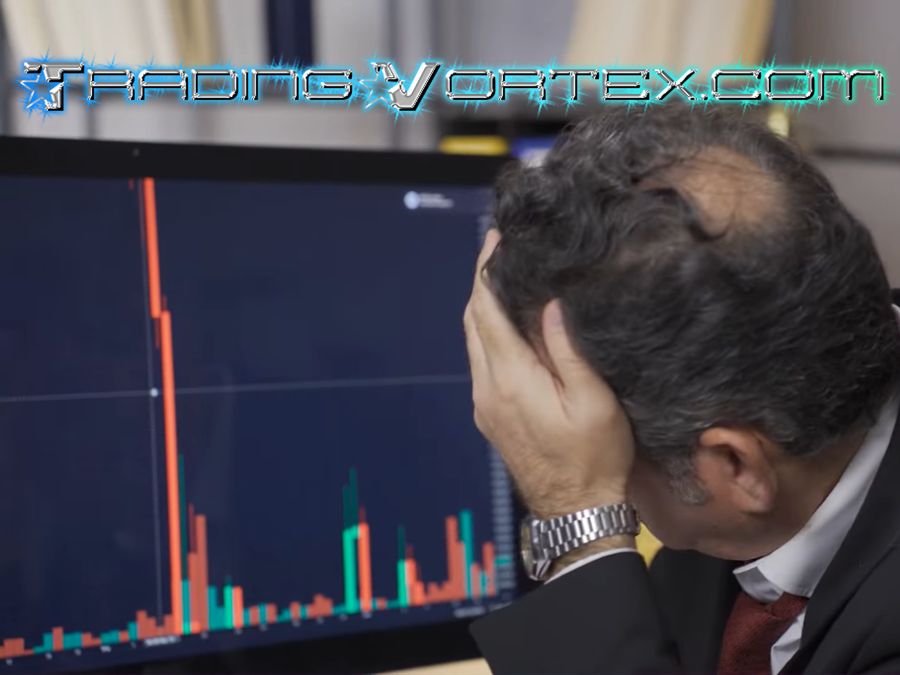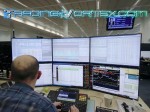Table Of Contents:
- Defining Trading Losses:
Psychology of Trading Losses:
Risk Management Strategies:
Learning from Trading Losses:
Developing Emotional Resilience:
Setting Realistic Expectations:
Adapting to Changing Market Conditions:
Seeking Support and Mentorship:
Real-Life Trading Loss Scenarios and Recovery Strategies:
Conclusion:
Defining Trading Losses:
Trading losses, at their core, are financial setbacks that occur when the value of a trader's investment decreases. These losses can manifest in various forms, impacting a trader's capital, portfolio, and emotional well-being. In this section, we will delve into what trading losses entail and the pivotal role that effective risk management plays in mitigating these losses.
What Are Trading Losses and Why Do They Occur?
Trading losses encompass any decline in the value of a trader's investment, whether it's stocks, bonds, commodities, currencies, or other financial instruments. These losses can occur for a multitude of reasons, each with its own set of triggers:
- Market Volatility: Financial markets are inherently volatile, with prices subject to fluctuation due to economic events, news releases, geopolitical factors, and market sentiment. Traders may incur losses when market movements go against their positions.
- Lack of Information: Inadequate research and information can lead to poor investment decisions. Traders who do not thoroughly analyze their trades or lack knowledge about the assets they trade are more likely to experience losses.
- Emotional Reactions: Emotional reactions, such as fear and greed, can drive impulsive trading decisions. For instance, traders may panic and sell assets during market downturns or hold onto losing positions in the hope of a quick reversal.
- Overleveraging: Overleveraging occurs when traders use excessive amounts of borrowed capital to magnify potential gains. However, it also amplifies losses, and if the market moves against them, traders can incur substantial debts.
- Lack of Risk Management: Failure to implement effective risk management strategies, such as setting stop-loss orders or diversifying a portfolio, leaves traders exposed to significant losses.
- Inadequate Planning: Trading without a well-defined trading plan can lead to erratic decision-making. Traders who deviate from their plans may face losses due to inconsistent strategies.
The Role of Risk Management in Mitigating Losses:
Effective risk management is the linchpin of successful trading. It involves a series of strategies and techniques aimed at safeguarding a trader's capital and minimizing losses. Key components of risk management include:
- Position Sizing: Determining the appropriate size of a trading position relative to the size of the trading account. This helps limit the potential loss on any single trade.
- Stop-Loss Orders: Setting predefined exit points to limit losses. Stop-loss orders automatically sell an asset when its price reaches a certain level, preventing further losses.
- Diversification: Spreading investments across different assets or asset classes to reduce the impact of losses on the overall portfolio.
- Risk-Reward Ratios: Evaluating the potential reward in proportion to the risk in each trade. Traders aim for favorable risk-reward ratios to ensure that potential gains outweigh potential losses.
- Emotional Discipline: Developing emotional resilience and discipline to prevent impulsive decisions driven by fear or greed.
In summary, defining trading losses involves recognizing them as the decline in the value of trading investments and understanding their underlying causes. Effective risk management is instrumental in mitigating these losses, helping traders protect their capital and navigate the challenging terrain of financial markets.
Psychology of Trading Losses:
The world of trading is not just about numbers, charts, and financial instruments; it is equally about the complex interplay of human psychology and emotions. Understanding the psychology of trading losses is essential for traders seeking to navigate the emotional roller coaster that often accompanies financial markets. In this section, we will explore how emotions impact trading and shed light on the cognitive biases that can lead to detrimental trading decisions.
Emotions and Trading: Managing Stress and Anxiety.
Trading is inherently stressful, and trading losses can amplify emotional responses. Here's a closer look at the emotional aspects of trading losses and strategies for managing them:
Fear and Anxiety:
Trading losses can trigger fear and anxiety, especially when trades move against a trader's expectations. Fear of further losses can lead to impulsive decisions, such as prematurely exiting trades or avoiding necessary risk.
Managing Stress: Traders can manage stress by practicing relaxation techniques, such as deep breathing or mindfulness exercises. Creating a structured trading plan and sticking to it can also alleviate anxiety.
Greed and Overconfidence:
On the flip side, winning trades can fuel greed and overconfidence, which can lead to excessive risk-taking and potentially larger losses.
Balancing Emotions: Maintaining a realistic perspective on both winning and losing streaks is crucial. Traders should avoid becoming overconfident after a string of successes and stick to their risk management strategies.
Regret and Recency Bias:
After a trading loss, it's common to experience regret and question past decisions. Traders may also fall prey to recency bias, where they overweight recent experiences in decision-making.
Overcoming Regret: Recognizing that losses are an inherent part of trading can help mitigate regret. Traders should focus on learning from their losses rather than dwelling on them.
Impulsivity:
Emotional reactions can lead to impulsive trading decisions, such as revenge trading (making trades to recover losses) or abandoning a well-thought-out strategy out of frustration.
Cultivating Discipline: Developing discipline and sticking to a predefined trading plan can prevent impulsive actions. Traders should set strict rules for when to enter and exit trades and adhere to them.
Cognitive Biases in Trading and Their Effects:
Cognitive biases are inherent mental shortcuts that can lead traders to make irrational decisions. These biases can have a significant impact on trading losses:
- Confirmation Bias: Traders tend to seek information that confirms their existing beliefs and ignore information that contradicts them. This bias can lead to trading decisions based on selective data.
- Overconfidence Bias: Overestimating one's knowledge and abilities can result in excessive risk-taking and underestimation of potential losses.
- Loss Aversion: The fear of losses can lead traders to hold onto losing positions longer than they should, hoping for a turnaround, which can result in even greater losses.
- Anchoring Bias: Traders may anchor their expectations to past prices or arbitrary reference points, leading to misjudgments of market movements.
- Hindsight Bias: After experiencing a loss, traders may convince themselves that they could have predicted it, leading to unrealistic hindsight analysis.
In conclusion, the psychology of trading losses is a critical aspect of becoming a successful trader. Managing emotions, such as fear and greed, and addressing cognitive biases are essential steps in developing the emotional resilience and rational decision-making required to navigate the challenges of trading losses.
Risk Management Strategies:
Effective risk management lies at the heart of successful trading. It involves a set of deliberate strategies and practices that traders employ to safeguard their capital, minimize potential losses, and ensure long-term sustainability in the financial markets. In this section, we will delve into key risk management strategies that can serve as a shield against the impact of trading losses.
Setting Effective Stop-Loss Orders:
Defining Stop-Loss Orders:
Risk Control: Setting a stop-loss order helps traders control the amount they are willing to risk on a trade. It establishes a clear exit point if the trade moves against them.
Types of Stop-Loss Orders:
- Fixed Stop-Loss: Traders set a specific price level as their stop-loss, such as 5% below the purchase price.
- Trailing Stop-Loss: The stop-loss level adjusts as the asset's price moves in a favorable direction, locking in profits while protecting against losses.
Position Sizing and Stop-Loss Placement:
The size of a trading position should be determined in conjunction with the placement of the stop-loss order. This ensures that losses are controlled within acceptable limits.
Risk-Reward Ratio: Traders should consider the risk-reward ratio when determining their stop-loss levels. Ideally, the potential reward should outweigh the potential risk.
Position Sizing, Diversification, and Risk-Reward Ratios:
Position Sizing:
This strategy involves determining the appropriate size of a trading position based on the trader's risk tolerance and the size of their trading account.
- Risk Percentage: Traders often limit their risk per trade to a specific percentage of their total trading capital. "For example, risking no more than 2% of the trading account on a single trade".
- Capital Preservation: Position sizing helps preserve trading capital by preventing the overexposure of funds in a single trade.
Diversification:
Diversifying a trading portfolio means spreading investments across different assets, asset classes, or markets. It is a key risk management strategy that helps reduce the impact of losses on the overall portfolio.
- Reducing Correlation: By holding assets with low or negative correlations, traders can minimize the likelihood of all assets in the portfolio experiencing simultaneous declines.
- Risk Spread: Diversification spreads risk across various investments, making the portfolio less susceptible to the poor performance of a single asset.
Risk-Reward Ratios:
Evaluating the potential reward in relation to the risk in each trade is fundamental to risk management.
- Positive Risk-Reward Ratio: Traders aim for trades where the potential reward is greater than the potential risk. "For example, targeting a 2:1 risk-reward ratio means the trader is willing to risk $1 to potentially gain $2".
- Enhancing Profitability: Positive risk-reward ratios can lead to profitable trading even if a trader is correct in less than half of their trades.
In summary, risk management strategies are the bedrock of responsible trading. Setting effective stop-loss orders, determining appropriate position sizes, diversifying portfolios, and evaluating risk-reward ratios are essential components of a robust risk management plan. By implementing these strategies, traders can protect their capital, reduce the impact of trading losses, and increase their chances of long-term success in the financial markets.
Learning from Trading Losses:
Trading losses, while unwelcome, can serve as invaluable teachers for traders who are willing to embrace them as learning opportunities. In this section, we will explore the importance of learning from trading losses and how traders can harness the power of post-trade analysis to identify mistakes and adapt their strategies for improvement.
The Power of Post-Trade Analysis:
What Is Post-Trade Analysis?
Objective Evaluation: Post-trade analysis requires a candid assessment of the trade without emotional biases. It's an objective approach to understanding what went right and what went wrong.
Key Components of Post-Trade Analysis:
- Trade Journaling: Maintaining a detailed trading journal that records the rationale for each trade, entry and exit points, risk-reward ratios, and emotional states during the trade.
- Performance Metrics: Tracking key performance metrics, such as win-loss ratios, average gains, and average losses, to gain a quantitative understanding of trading performance.
- Graphical Analysis: Creating charts and graphs that visualize trading performance can provide valuable insights into trends and patterns.
Benefits of Post-Trade Analysis:
- Continuous Learning: Traders can continuously learn from their experiences, both positive and negative, by analyzing past trades.
- Error Identification: Post-trade analysis helps in identifying recurring mistakes, whether they involve strategy, risk management, or emotional reactions.
- Strategy Refinement: It provides the basis for refining trading strategies by recognizing what works and what doesn't in different market conditions.
Identifying Mistakes and Adapting Strategies for Improvement:
Recognizing Common Trading Mistakes:
- Overtrading: Trading too frequently or with excessive position sizes can lead to unnecessary losses.
- Ignoring Risk Management: Neglecting risk management practices like setting stop-loss orders or not diversifying the portfolio.
- Revenge Trading: Chasing losses by taking impulsive trades in an attempt to recover previous losses.
- Lack of Discipline: Deviating from a well-defined trading plan or letting emotions drive trading decisions.
Adapting Strategies for Improvement:
- Mistake Avoidance: Once common mistakes are identified, traders can consciously work to avoid them in future trades.
- Strategy Adjustments: Traders can adapt their strategies based on the lessons learned from past losses. This may involve refining entry and exit criteria or fine-tuning risk management practices.
- Emotional Discipline: Developing emotional resilience and discipline is crucial for preventing impulsive decisions that can lead to losses.
Backtesting:
Before implementing changes, traders can use historical data to backtest new strategies and assess their potential effectiveness.
In conclusion, trading losses need not be viewed solely as setbacks; they can be stepping stones toward improvement and long-term success. Learning from trading losses through post-trade analysis is a proactive approach that enables traders to identify mistakes, refine strategies, and enhance their trading skills. It's a journey of continuous improvement that separates successful traders from those who struggle to recover from losses.
Developing Emotional Resilience:
Trading losses are not just financial setbacks; they can also take a toll on a trader's emotional well-being. Developing emotional resilience is a vital skill that can help traders weather the emotional storms that often accompany trading. In this section, we will explore coping mechanisms for handling emotional stress and the importance of discipline, patience, and mindfulness in trading.
Coping Mechanisms for Handling Emotional Stress:
Acceptance and Emotional Awareness:
- Embracing Losses: The first step in developing emotional resilience is accepting that trading losses are an inevitable part of the journey. Embrace them as opportunities for growth.
- Mindful Awareness: Practice mindfulness to become more aware of your emotions and thoughts during trading. Mindfulness techniques, such as meditation, can help you stay grounded in the present moment.
Positive Self-Talk and Perspective:
- Constructive Self-Talk: Replace negative self-talk with positive and constructive thoughts. Instead of dwelling on losses, focus on what you can learn from them.
- Long-Term Perspective: Keep a long-term perspective in mind. One trade does not define your entire trading career.
Emotional Outlet:
- Healthy Venting: Find healthy ways to release emotional stress, such as talking to a trusted friend or therapist, journaling, or engaging in physical activities like exercise.
- Avoid Impulsive Actions: Avoid making impulsive trading decisions as a way to cope with emotional stress. Impulsive actions often lead to further losses.
Discipline, Patience, and Mindfulness in Trading:
Discipline:
- Stick to Your Trading Plan: Developing discipline means adhering to your predefined trading plan, including risk management strategies and trade execution rules.
- Avoid Revenge Trading: Resist the temptation to engage in revenge trading after a loss. Stick to your plan and avoid chasing losses.
Patience:
- Wait for Ideal Setups: Be patient and wait for high-probability trading setups that align with your strategy. Avoid the urge to force trades in unfavorable conditions.
- Tolerate Drawdowns: Accept that drawdowns and losses are part of trading. Patience involves staying committed to your strategy even during challenging periods.
Mindfulness in Trading:
- Staying Present: Practice mindfulness during trading by focusing on the current trade rather than dwelling on past losses or anticipating future gains.
- Emotional Regulation: Mindfulness techniques can help regulate emotions and prevent impulsive decision-making.
In conclusion, developing emotional resilience is an essential aspect of dealing with trading losses. Coping mechanisms, such as acceptance, positive self-talk, and emotional outlets, help traders manage emotional stress. Discipline, patience, and mindfulness in trading are key skills that allow traders to stay focused on their long-term goals and make rational decisions even in the face of losses. By mastering these aspects, traders can cultivate the emotional resilience needed to thrive in the challenging world of trading.
Setting Realistic Expectations:
In the world of trading, setting realistic expectations is a fundamental component of resilience and long-term success. It involves a sober assessment of one's abilities and a recognition of the inherent uncertainties in the financial markets. In this section, we will explore the challenges of overconfidence in trading and the importance of embracing the inevitability of losses.
Overcoming Overconfidence in Trading:
Understanding Overconfidence:
- Overestimation of Skills: Overconfidence in trading often manifests as an overestimation of one's knowledge, skills, and ability to predict market movements accurately.
- Risk of Overtrading: Overconfident traders may take excessive risks, deviate from their trading plans, and neglect proper risk management practices.
Signs of Overconfidence:
- Excessive Trading Activity: Frequent trading and a high turnover rate can be indicative of overconfidence, as traders may believe they can consistently beat the market.
- Disregarding Stop-Loss Orders: Overconfident traders might avoid using stop-loss orders, believing they can always manage trades effectively.
Mitigating Overconfidence:
- Continuous Learning: Recognize that there is always more to learn in the world of trading. Stay humble and committed to ongoing education and self-improvement.
- Objective Assessment: Regularly review your trading performance objectively. Analyze both winning and losing trades to identify areas for improvement.
Embracing the Inevitability of Losses:
Acknowledging the Reality:
- Inherent Uncertainty: Understand that trading involves inherent uncertainties, and losses are an unavoidable part of the journey. No trader, regardless of skill, is immune to losses.
- No Guarantees: Trading does not offer guarantees of profit. Even the most experienced traders experience losses from time to time.
Preventing Emotional Turmoil:
- Avoiding Despair: By acknowledging the inevitability of losses, traders can avoid despair and emotional distress when they occur.
- Staying Resilient: Embracing losses as part of the process helps traders maintain emotional resilience and stay committed to their trading plans.
Setting Realistic Goals:
- Long-Term Perspective: Focus on long-term goals rather than short-term gains. Setting realistic, achievable goals can help traders avoid chasing unrealistic expectations.
- Risk Management: Incorporate risk management into your trading plan to limit the impact of losses on your overall portfolio.
In conclusion, setting realistic expectations in trading is an essential component of effective risk management and emotional resilience. Overcoming overconfidence requires humility and ongoing self-assessment, while embracing the inevitability of losses helps traders maintain emotional balance and stay committed to their long-term goals. By adopting these principles, traders can navigate the challenges of trading losses with a clear and realistic mindset.
Adapting to Changing Market Conditions:
One of the fundamental truths of trading is that market conditions are not static; they are dynamic, subject to constant change. Traders who succeed in the long term are those who can adapt to these shifting conditions effectively. In this section, we will explore the importance of recognizing market trends and adjusting strategies, as well as the pitfalls of revenge trading.
Recognizing Market Trends and Adjusting Strategies:
Understanding Market Trends:
- Bull and Bear Markets: Markets cycle between bull (rising) and bear (falling) phases. Recognizing the prevailing trend is crucial for making informed trading decisions.
- Sideways Markets: At times, markets move sideways, lacking a clear trend. These conditions require a different approach than trending markets.
Adapting to Trends:
- Trend Following: In a strong trend, consider trend-following strategies, where you aim to ride the trend and capitalize on its momentum.
- Range-Bound Markets: In sideways markets, adopt range-trading strategies, where you buy low and sell high within a defined price range.
- Risk Management: Adjust risk management strategies according to market conditions. In volatile markets, tighten stop-loss levels, while in calmer markets, allow for more flexibility.
Avoiding Revenge Trading Pitfalls:
Understanding Revenge Trading:
- Definition: Revenge trading is the act of impulsively taking excessive risks in an attempt to recover losses incurred from previous trades.
- Emotional Drive: Revenge trading is primarily driven by emotions, such as frustration, anger, or a desire for quick recovery.
The Pitfalls of Revenge Trading:
- Compounding Losses: Revenge trading often leads to compounding losses, as impulsive decisions rarely result in profitable outcomes.
- Emotional Stress: It can increase emotional stress and further erode discipline, leading to a cycle of destructive behavior.
Preventing Revenge Trading:
- Emotional Regulation: Develop emotional resilience through mindfulness and emotional regulation techniques. Recognize and manage emotions when they arise.
- Trading Plan Discipline: Stick to your trading plan and risk management strategies. Avoid making impulsive decisions that deviate from your plan.
- Taking a Break: If you find yourself caught in a cycle of revenge trading, take a break from trading. Step back, reassess your strategy, and regain emotional composure.
In conclusion, adapting to changing market conditions is a critical skill for traders seeking long-term success. Recognizing market trends and adjusting strategies accordingly is essential for staying profitable. Furthermore, avoiding the pitfalls of revenge trading, driven by emotional reactions to losses, is crucial for maintaining discipline and preventing further financial setbacks. Traders who can adapt and stay disciplined in the face of changing conditions are better equipped to navigate the challenges of trading losses.
Seeking Support and Mentorship:
Trading can be a solitary endeavor, but it doesn't have to be. Seeking support and mentorship is a proactive approach to dealing with trading losses. In this section, we will explore the benefits of leveraging trading communities and networks, as well as the value of guidance from experienced traders.
Leveraging Trading Communities and Networks:
What Are Trading Communities and Networks?
- Online Forums and Groups: Trading communities exist on various online platforms where traders discuss strategies, share insights, and provide emotional support.
- Local Meetups and Workshops: In-person trading networks, such as local meetups or workshops, provide opportunities to connect with traders in your area.
Benefits of Trading Communities:
- Shared Knowledge: Trading communities offer access to a wealth of collective knowledge and experience. You can learn from others' successes and mistakes.
- Emotional Support: Traders within these communities often understand the emotional challenges of trading and can offer support during tough times.
- Accountability: Being part of a community can help you stay accountable to your trading goals and plans.
Cautions:
- Quality Control: Not all information within trading communities is reliable. It's important to verify information and avoid blindly following advice.
- Overtrading: Be cautious of spending excessive time in online communities, which can lead to overtrading or information overload.
The Value of Guidance from Experienced Traders:
Mentorship Defined:
- Mentorship: Mentorship involves an experienced trader providing guidance, feedback, and support to a less experienced trader.
- Mentor-Mentee Relationship: A mentor-mentee relationship can be formal or informal, with the mentor sharing knowledge and helping the mentee develop as a trader.
Benefits of Mentorship:
- Accelerated Learning: A mentor can help you avoid common pitfalls and provide insights that may take years to learn on your own.
- Personalized Guidance: A mentor tailors guidance to your specific trading style, goals, and weaknesses.
- Emotional Support: Experienced mentors can offer emotional support during challenging times, such as trading losses.
Finding a Mentor:
- Networking: Attend trading seminars, workshops, or join online forums to connect with potential mentors.
- Industry Events: Consider attending industry events or conferences where experienced traders often gather.
- Online Mentorship Programs: Some trading experts offer structured online mentorship programs for aspiring traders.
In conclusion, seeking support and mentorship can significantly enhance your ability to deal with trading losses. Trading communities and networks provide valuable knowledge and emotional support, while mentorship from experienced traders offers personalized guidance and accelerates your learning curve. These resources empower you to tackle the challenges of trading losses with a stronger support system and a deeper understanding of the markets.
Real-Life Trading Loss Scenarios and Recovery Strategies:
Learning from real-life trading loss scenarios and the recovery strategies employed by experienced traders can offer valuable insights into dealing with trading losses effectively. In this section, we will delve into actual case studies and examples that highlight the challenges traders face and the strategies they employ to recover from losses.
Case Study 1: The Overleveraged Trader.
Scenario:
Recovery Strategy:
- Risk Management Overhaul: After suffering significant losses, the trader reevaluated their risk management approach. They reduced leverage and implemented stricter stop-loss orders to limit potential losses.
- Education and Skill Building: The trader recognized the need for a better understanding of risk and developed their trading skills through education and practice.
- Gradual Recovery: Over time, the trader slowly recovered their losses by making conservative trades and focusing on consistent, small gains.
Case Study 2: Emotional Discipline Triumph.
Scenario:
Recovery Strategy:
- Emotional Resilience Training: The trader sought help from a therapist to develop emotional resilience and learn techniques to manage emotions during trading.
Mindfulness Practice: They incorporated mindfulness practices into their daily routine to stay focused and present during trades.
Strict Adherence to Trading Plan: The trader strictly adhered to their trading plan, which included predefined entry and exit points, risk management rules, and disciplined trade execution.
Case Study 3: Diversification and Long-Term Perspective.
Scenario:
Recovery Strategy:
- Portfolio Diversification: Recognizing the importance of diversification, the trader spread their investments across various asset classes, reducing the impact of losses in any one area.
- Long-Term Focus: Instead of fixating on short-term losses, the trader adopted a long-term perspective and continued to invest and trade with a focus on overall portfolio growth.
- Risk Management Review: They reviewed and adjusted their risk management strategies to align with their diversified portfolio.
These case studies illustrate the diverse challenges traders encounter and the recovery strategies they implement. While each trader's journey is unique, common threads include risk management adjustments, emotional discipline, education, and a long-term perspective. These real-life examples serve as valuable lessons for traders dealing with their own losses, emphasizing that recovery is possible through resilience, learning, and adaptability.
Conclusion:
Dealing with trading losses is an integral part of a trader's journey, and how one responds to setbacks can determine long-term success in the financial markets. Throughout this article, we've explored a comprehensive range of strategies and approaches to help traders effectively manage and overcome trading losses. Here, we recap the key takeaways for effective trading loss management and encourage you to implement these proven strategies in your trading journey.
Key Takeaways for Effective Trading Loss Management
- Risk Management Is Paramount: Implementing robust risk management strategies, including setting effective stop-loss orders, position sizing, and diversification, is crucial for protecting your capital and mitigating losses.
- Embrace Emotional Resilience: Recognize that trading is emotionally demanding, and emotional resilience is a vital skill. Develop mindfulness, discipline, and the ability to manage emotions during both winning and losing trades.
- Continuous Learning: Trading is a continuous learning process. Regularly review your trading performance, seek support and mentorship, and stay updated with the latest market developments and trading strategies.
- Realistic Expectations: Set realistic expectations and understand that losses are an inherent part of trading. Avoid overconfidence, and acknowledge that no trader is immune to losses.
- Adapt to Changing Conditions: Markets evolve, and successful traders adapt with them. Recognize market trends, adjust your strategies accordingly, and avoid the temptation of revenge trading.
- Seek Support and Mentorship: Connect with trading communities, both online and offline, to gain insights and emotional support. Consider seeking mentorship from experienced traders who can provide personalized guidance.
- Learn from Real-Life Examples: Case studies and real-life examples of traders who faced losses and successfully recovered can provide valuable lessons and inspiration for your own journey.
Encouragement to Implement Proven Strategies:
The path to becoming a successful trader is not without its challenges, and trading losses are an inevitable part of the process. However, by implementing the strategies and approaches discussed in this article, you can navigate the challenges of trading losses with greater resilience, knowledge, and adaptability.
Remember that trading is a journey, and setbacks are opportunities for growth and improvement. Stay committed to your trading plan, remain disciplined, and be patient. Each trading loss can be a stepping stone toward becoming a more skilled and resilient trader.
In closing, effective trading loss management is not just about avoiding losses but also about learning from them and using those lessons to become a more informed and proficient trader. By embracing these strategies and continuously improving your trading skills, you are better equipped to thrive in the dynamic world of financial markets.









































 TradingVortex.com® 2019 © All Rights Reserved.
TradingVortex.com® 2019 © All Rights Reserved.